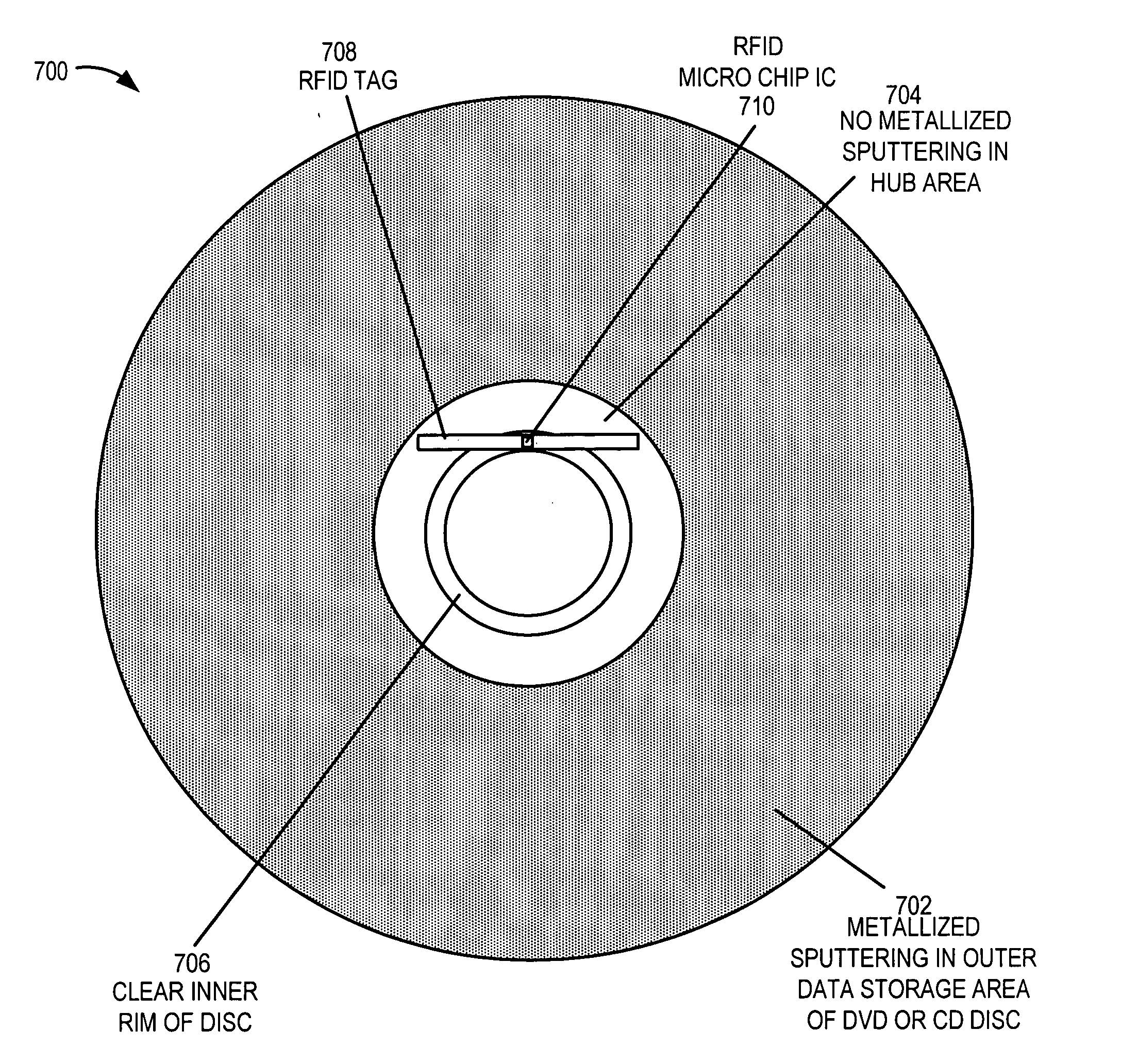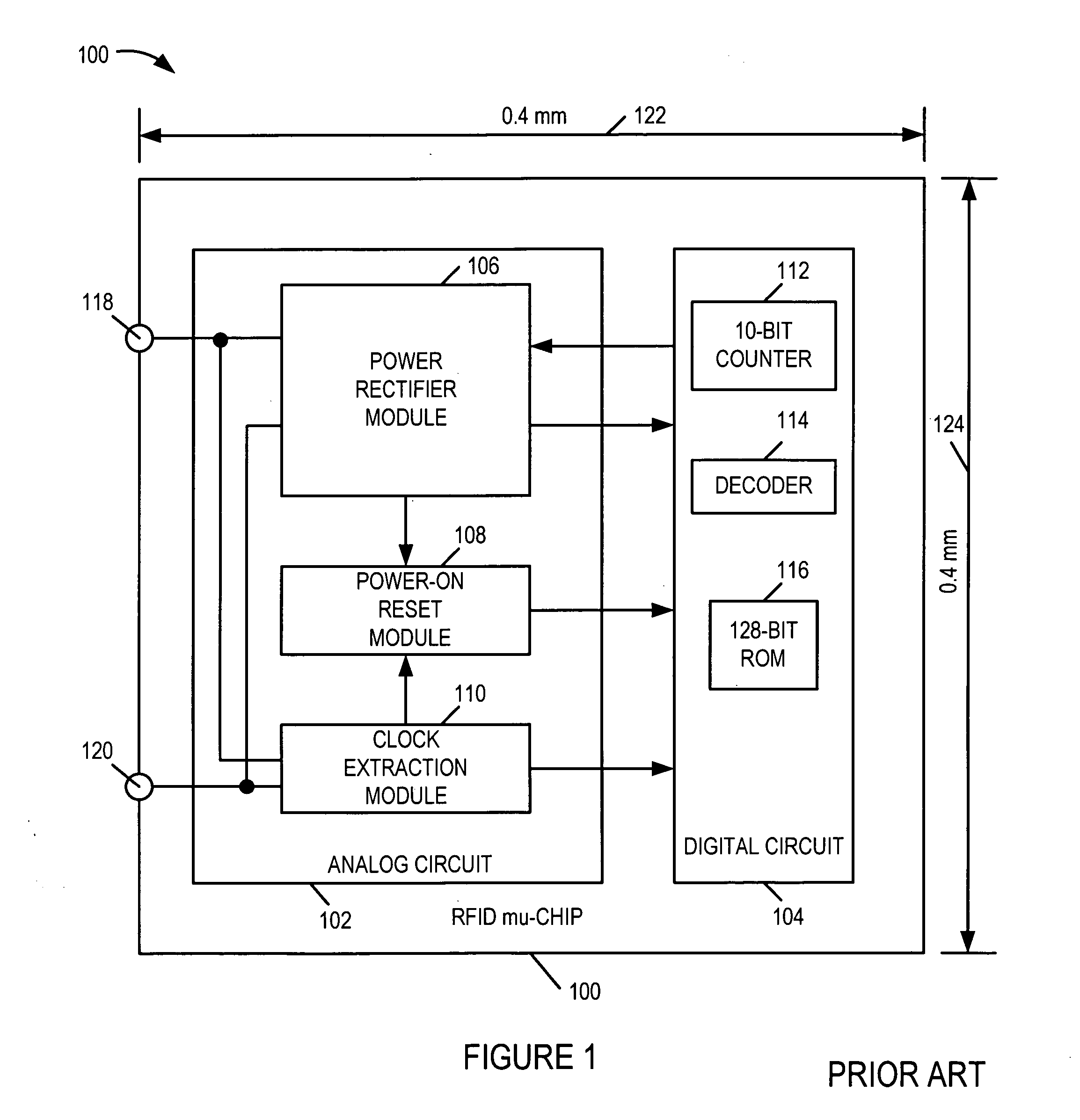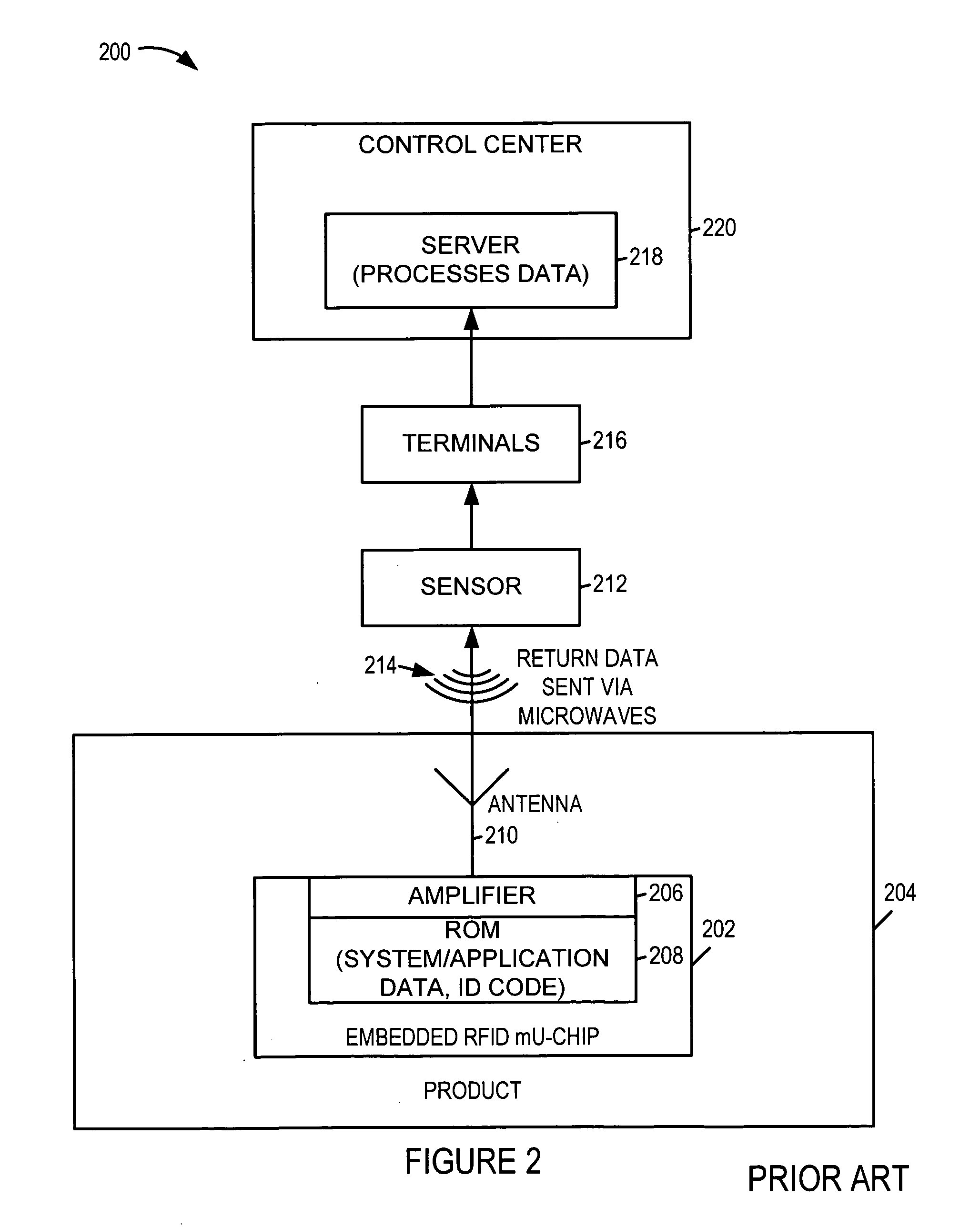Radio frequency identification tags for digital storage discs
a technology of radio frequency identification and digital storage disc, which is applied in the field of identification tags, can solve the problems that many of the known rfid tag designs tend to be higher in cost, and achieve the effect of reducing the length of the linear dipole antenna
- Summary
- Abstract
- Description
- Claims
- Application Information
AI Technical Summary
Benefits of technology
Problems solved by technology
Method used
Image
Examples
Embodiment Construction
[0059] In order to overcome one or more of the obstacles of prior RFID systems, in some embodiments of the present invention, an existing RFID tag including a linear dipole antenna tuned to the RF carrier frequency is modified prior to use by preferably trimming equal lengths of the antenna at both ends so that the tag fits within the hub area of both a CD or a DVD without extending into the data area. In some embodiments of the present invention, an RFID in accordance with the present invention is manufactured such that the linear dipole antenna has a detuned antenna, with the manufactured antenna length being shorter than the length that would be selected to achieve optimal tuning for the operational frequency when operating in a free space environment, the tag length being such that the tag fits within the hub area of both a CD or a DVD without extending into the data area. In some such configurations, the RFID tag is positioned tangential to the central hole with the chip center...
PUM
 Login to View More
Login to View More Abstract
Description
Claims
Application Information
 Login to View More
Login to View More - R&D
- Intellectual Property
- Life Sciences
- Materials
- Tech Scout
- Unparalleled Data Quality
- Higher Quality Content
- 60% Fewer Hallucinations
Browse by: Latest US Patents, China's latest patents, Technical Efficacy Thesaurus, Application Domain, Technology Topic, Popular Technical Reports.
© 2025 PatSnap. All rights reserved.Legal|Privacy policy|Modern Slavery Act Transparency Statement|Sitemap|About US| Contact US: help@patsnap.com



